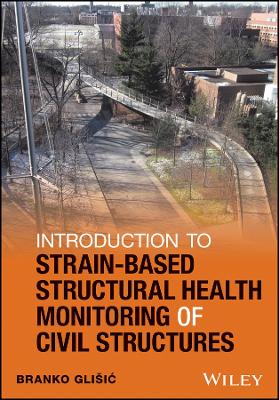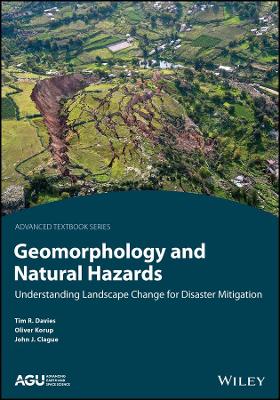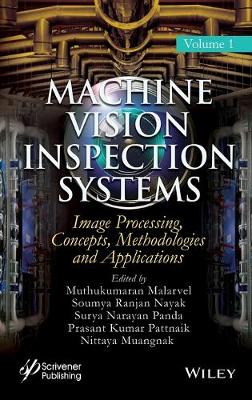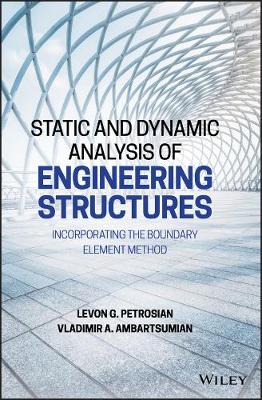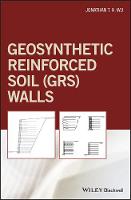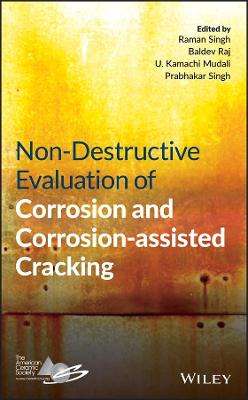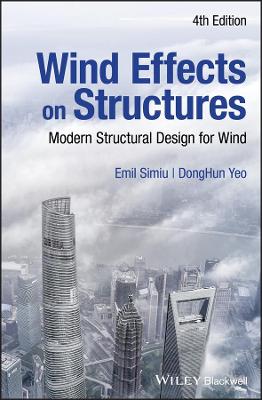Computer Vision for Structural Dynamics and Health Monitoring
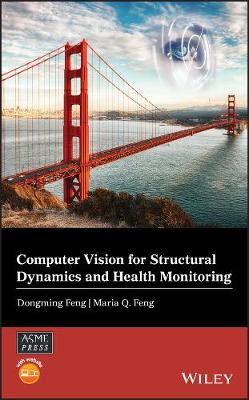 -15%
portes grátis
-15%
portes grátis
Computer Vision for Structural Dynamics and Health Monitoring
Feng, Dongming; Feng, Maria Q.
John Wiley & Sons Inc
11/2020
256
Dura
Inglês
9781119566588
15 a 20 dias
488
List of Tables xv
Series Preface xvii
Preface xix
About the Companion Website xxi
1 Introduction 1
1.1 Structural Health Monitoring: A Quick Review 1
1.2 Computer Vision Sensors for Structural Health Monitoring 3
1.3 Organization of the Book 7
2 Development of a Computer Vision Sensor for Structural Displacement Measurement 11
2.1 Vision Sensor System Hardware 11
2.2 Vision Sensor System Software: Template-Matching Techniques 15
2.2.1 Area-Based Template Matching 16
2.2.2 Feature-Based Template Matching 20
2.3 Coordinate Conversion and Scaling Factors 22
2.3.1 Camera Calibration Method 23
2.3.2 Practical Calibration Method 25
2.4 Representative Template Matching Algorithms 28
2.4.1 Intensity-Based UCC Technique 28
2.4.2 Gradient-Based Robust OCM Technique 33
2.4.3 Vision Sensor Software Package and Operation 39
2.5 Summary 40
3 Performance Evaluation Through Laboratory and Field Tests 43
3.1 Seismic Shaking Table Test 43
3.2 Shaking Table Test of Frame Structure 1 46
3.2.1 Test Description 46
3.2.2 Subpixel Resolution 47
3.2.3 Performance When Tracking Artificial Targets 48
3.2.4 Performance When Tracking Natural Targets 49
3.2.5 Error Quantification 51
3.2.6 Evaluation of OCM and UCC Robustness 51
3.3 Seismic Shaking Table Test of Frame Structure 2 56
3.4 Free Vibration Test of a Beam Structure 59
3.4.1 Test Description 59
3.4.2 Evaluation of the Practical Calibration Method 60
3.5 Field Test of a Pedestrian Bridge 63
3.6 Field Test of a Highway Bridge 66
3.7 Field Test of Two Railway Bridges 67
3.7.1 Test Description 69
3.7.2 Daytime Measurements 72
3.7.3 Nighttime Measurements 72
3.7.4 Field Performance Evaluation 75
3.8 Remote Measurement of the Vincent Thomas Bridge 81
3.9 Remote Measurement of the Manhattan Bridge 82
3.10 Summary 87
4 Application in Modal Analysis, Model Updating, and Damage Detection 89
4.1 Experimental Modal Analysis 91
4.1.1 Modal Analysis of a Frame 91
4.1.2 Modal Analysis of a Beam 97
4.2 Model Updating as a Frequency-Domain Optimization Problem 101
4.3 Damage Detection 108
4.3.1 Mode Shape Curvature-Based Damage Index 108
4.3.2 Test Description 109
4.3.3 Damage Detection Results 110
4.4 Summary 112
5 Application in Model Updating of Railway Bridges under Trainloads 115
5.1 Field Measurement of Bridge Displacement under Trainloads 116
5.2 Formulation of the Finite Element Model 118
5.2.1 Modeling the Train-Track-Bridge Interaction 118
5.2.2 Finite Element Model of the Railway Bridge 120
5.3 Sensitivity Analysis and Finite Element Model Updating 121
5.3.1 Model Updating as a Time-Domain Optimization Problem 122
5.3.2 Sensitivity Analysis of Displacement and Acceleration Responses 123
5.3.3 Finite Element Model Updating 127
5.4 Dynamic Characteristics of Short-Span Bridges under Trainloads 130
5.5 Summary 136
6 Application in Simultaneously Identifying Structural Parameters and Excitation Forces 139
6.1 Simultaneous Identification Using Vision-Based Displacement Measurements 140
6.1.1 Structural Parameter Identification as a Time-Domain Optimization Problem 141
6.1.2 Force Identification Based on Structural Displacement Measurements 142
6.1.3 Simultaneous Identification Procedure 144
6.2 Numerical Example 146
6.2.1 Robustness to Noise and Number of Sensors 147
6.2.2 Robustness to Initial Stiffness Values 150
6.2.3 Robustness to Damping Ratio Values 150
6.3 Experimental Validation 154
6.3.1 Test Description 154
6.3.2 Identification Results 155
6.4 Summary 157
7 Application in Estimating Cable Force 171
7.1 Vision Sensor for Estimating Cable Force 172
7.1.1 Vibration Method 172
7.1.2 Procedure for Vision-Based Cable Tension Estimation 173
7.2 Implementation in the Hard Rock Stadium Renovation Project 174
7.2.1 Hard Rock Stadium 175
7.2.2 Test Description 176
7.2.3 Estimating and Validating Cable Force 178
7.3 Implementation in the Bronx-Whitestone Bridge Suspender Replacement Project 184
7.3.1 Bronx-Whitestone Bridge 184
7.3.2 Estimating Suspender Tension 185
7.4 Summary 187
8 Achievements, Challenges, and Opportunities 191
8.1 Capabilities of Vision-Based Displacement Sensors: A Summary 191
8.1.1 Artificial vs. Natural Targets 192
8.1.2 Single-Point vs. Multipoint Measurements 192
8.1.3 Pixel vs. Subpixel Resolution 193
8.1.4 2D vs. 3D Measurements 194
8.1.5 Real Time vs. Post Processing 194
8.2 Sources of Error in Vision-Based Displacement Sensors 195
8.2.1 Camera Motion 196
8.2.2 Coordinate Conversion 197
8.2.3 Hardware Limitations 198
8.2.4 Environmental Sources 198
8.3 Vision-Based Displacement Sensors for Structural Health Monitoring 199
8.3.1 Dynamic Displacement Measurement 199
8.3.2 Modal Property Identification 201
8.3.3 Model Updating and Damage Detection 202
8.3.4 Cable Force Estimation 203
8.4 Other Civil and Structural Engineering Applications 204
8.4.1 Automated Machine Visual Inspection 204
8.4.2 Onsite Construction Tracking and Safety Monitoring 206
8.4.3 Vehicle Load Estimation 206
8.4.4 Other Applications 207
8.5 Future Research Directions 208
Appendix: Fundamentals of Digital Image Processing Using MATLAB 211
A.1 Digital Image Representation 211
A.2 Noise Removal 214
A.3 Edge Detection 216
A.4 Discrete Fourier Transform 217
References 221
Index 229
List of Tables xv
Series Preface xvii
Preface xix
About the Companion Website xxi
1 Introduction 1
1.1 Structural Health Monitoring: A Quick Review 1
1.2 Computer Vision Sensors for Structural Health Monitoring 3
1.3 Organization of the Book 7
2 Development of a Computer Vision Sensor for Structural Displacement Measurement 11
2.1 Vision Sensor System Hardware 11
2.2 Vision Sensor System Software: Template-Matching Techniques 15
2.2.1 Area-Based Template Matching 16
2.2.2 Feature-Based Template Matching 20
2.3 Coordinate Conversion and Scaling Factors 22
2.3.1 Camera Calibration Method 23
2.3.2 Practical Calibration Method 25
2.4 Representative Template Matching Algorithms 28
2.4.1 Intensity-Based UCC Technique 28
2.4.2 Gradient-Based Robust OCM Technique 33
2.4.3 Vision Sensor Software Package and Operation 39
2.5 Summary 40
3 Performance Evaluation Through Laboratory and Field Tests 43
3.1 Seismic Shaking Table Test 43
3.2 Shaking Table Test of Frame Structure 1 46
3.2.1 Test Description 46
3.2.2 Subpixel Resolution 47
3.2.3 Performance When Tracking Artificial Targets 48
3.2.4 Performance When Tracking Natural Targets 49
3.2.5 Error Quantification 51
3.2.6 Evaluation of OCM and UCC Robustness 51
3.3 Seismic Shaking Table Test of Frame Structure 2 56
3.4 Free Vibration Test of a Beam Structure 59
3.4.1 Test Description 59
3.4.2 Evaluation of the Practical Calibration Method 60
3.5 Field Test of a Pedestrian Bridge 63
3.6 Field Test of a Highway Bridge 66
3.7 Field Test of Two Railway Bridges 67
3.7.1 Test Description 69
3.7.2 Daytime Measurements 72
3.7.3 Nighttime Measurements 72
3.7.4 Field Performance Evaluation 75
3.8 Remote Measurement of the Vincent Thomas Bridge 81
3.9 Remote Measurement of the Manhattan Bridge 82
3.10 Summary 87
4 Application in Modal Analysis, Model Updating, and Damage Detection 89
4.1 Experimental Modal Analysis 91
4.1.1 Modal Analysis of a Frame 91
4.1.2 Modal Analysis of a Beam 97
4.2 Model Updating as a Frequency-Domain Optimization Problem 101
4.3 Damage Detection 108
4.3.1 Mode Shape Curvature-Based Damage Index 108
4.3.2 Test Description 109
4.3.3 Damage Detection Results 110
4.4 Summary 112
5 Application in Model Updating of Railway Bridges under Trainloads 115
5.1 Field Measurement of Bridge Displacement under Trainloads 116
5.2 Formulation of the Finite Element Model 118
5.2.1 Modeling the Train-Track-Bridge Interaction 118
5.2.2 Finite Element Model of the Railway Bridge 120
5.3 Sensitivity Analysis and Finite Element Model Updating 121
5.3.1 Model Updating as a Time-Domain Optimization Problem 122
5.3.2 Sensitivity Analysis of Displacement and Acceleration Responses 123
5.3.3 Finite Element Model Updating 127
5.4 Dynamic Characteristics of Short-Span Bridges under Trainloads 130
5.5 Summary 136
6 Application in Simultaneously Identifying Structural Parameters and Excitation Forces 139
6.1 Simultaneous Identification Using Vision-Based Displacement Measurements 140
6.1.1 Structural Parameter Identification as a Time-Domain Optimization Problem 141
6.1.2 Force Identification Based on Structural Displacement Measurements 142
6.1.3 Simultaneous Identification Procedure 144
6.2 Numerical Example 146
6.2.1 Robustness to Noise and Number of Sensors 147
6.2.2 Robustness to Initial Stiffness Values 150
6.2.3 Robustness to Damping Ratio Values 150
6.3 Experimental Validation 154
6.3.1 Test Description 154
6.3.2 Identification Results 155
6.4 Summary 157
7 Application in Estimating Cable Force 171
7.1 Vision Sensor for Estimating Cable Force 172
7.1.1 Vibration Method 172
7.1.2 Procedure for Vision-Based Cable Tension Estimation 173
7.2 Implementation in the Hard Rock Stadium Renovation Project 174
7.2.1 Hard Rock Stadium 175
7.2.2 Test Description 176
7.2.3 Estimating and Validating Cable Force 178
7.3 Implementation in the Bronx-Whitestone Bridge Suspender Replacement Project 184
7.3.1 Bronx-Whitestone Bridge 184
7.3.2 Estimating Suspender Tension 185
7.4 Summary 187
8 Achievements, Challenges, and Opportunities 191
8.1 Capabilities of Vision-Based Displacement Sensors: A Summary 191
8.1.1 Artificial vs. Natural Targets 192
8.1.2 Single-Point vs. Multipoint Measurements 192
8.1.3 Pixel vs. Subpixel Resolution 193
8.1.4 2D vs. 3D Measurements 194
8.1.5 Real Time vs. Post Processing 194
8.2 Sources of Error in Vision-Based Displacement Sensors 195
8.2.1 Camera Motion 196
8.2.2 Coordinate Conversion 197
8.2.3 Hardware Limitations 198
8.2.4 Environmental Sources 198
8.3 Vision-Based Displacement Sensors for Structural Health Monitoring 199
8.3.1 Dynamic Displacement Measurement 199
8.3.2 Modal Property Identification 201
8.3.3 Model Updating and Damage Detection 202
8.3.4 Cable Force Estimation 203
8.4 Other Civil and Structural Engineering Applications 204
8.4.1 Automated Machine Visual Inspection 204
8.4.2 Onsite Construction Tracking and Safety Monitoring 206
8.4.3 Vehicle Load Estimation 206
8.4.4 Other Applications 207
8.5 Future Research Directions 208
Appendix: Fundamentals of Digital Image Processing Using MATLAB 211
A.1 Digital Image Representation 211
A.2 Noise Removal 214
A.3 Edge Detection 216
A.4 Discrete Fourier Transform 217
References 221
Index 229

